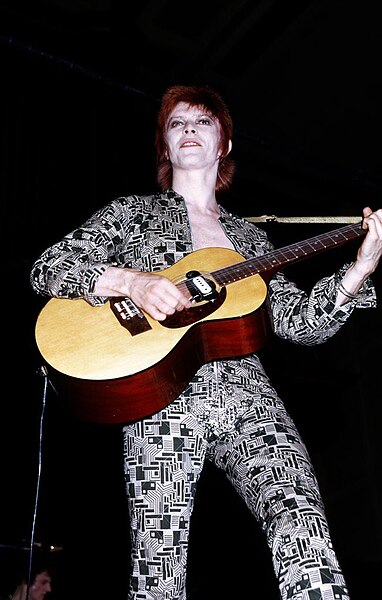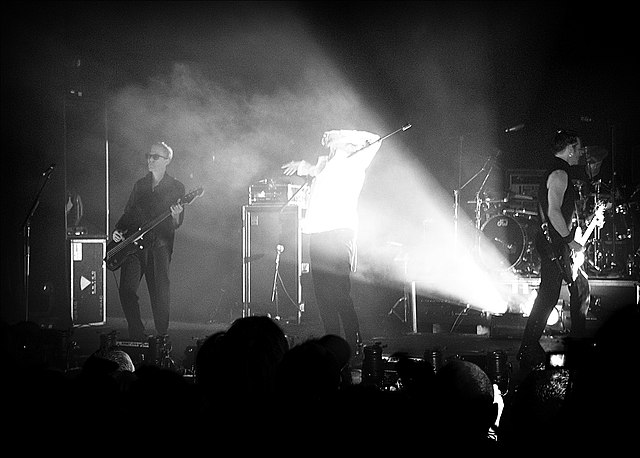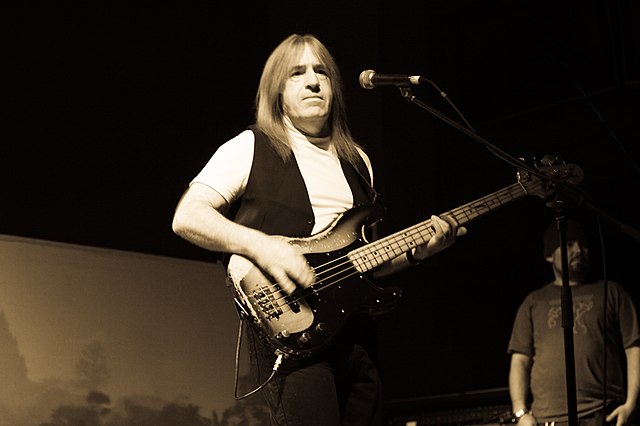"Ziggy Stardust" is a song written by the English singer-songwriter David Bowie for his 1972 album The Rise and Fall of Ziggy Stardust and the Spiders from Mars. Co-produced by Bowie and Ken Scott, he recorded it at Trident Studios in London in November 1971 with his backing band the Spiders from Mars—comprising Mick Ronson, Trevor Bolder and Mick Woodmansey. Lyrically, the song is about Ziggy Stardust, a bisexual alien rock star who acts as a messenger for extraterrestrial beings. The character was influenced by English singer Vince Taylor, as well as the Legendary Stardust Cowboy and Kansai Yamamoto. Although Ziggy is introduced earlier on the album, this song is its centrepiece, presenting the rise and fall of the star in a very human-like manner. Musically, it is a glam rock song, like its parent album, and is based around a Ronson guitar riff.
Cover of the 1994 live single version
Ziggy Stardust (song)
Bowie in character as Ziggy Stardust performing during the Ziggy Stardust Tour.
Bauhaus performing in London in 2006.
Trevor Bolder was an English rock musician, songwriter and record producer. He is best known for his long association with Uriah Heep and his tenure with the Spiders from Mars, the backing band for David Bowie, although he also played alongside a variety of musicians from the early 1970s.
Bolder in Milan, 9 November 2008
Bolder playing a Fender Precision Bass signature bass guitar in 2006






